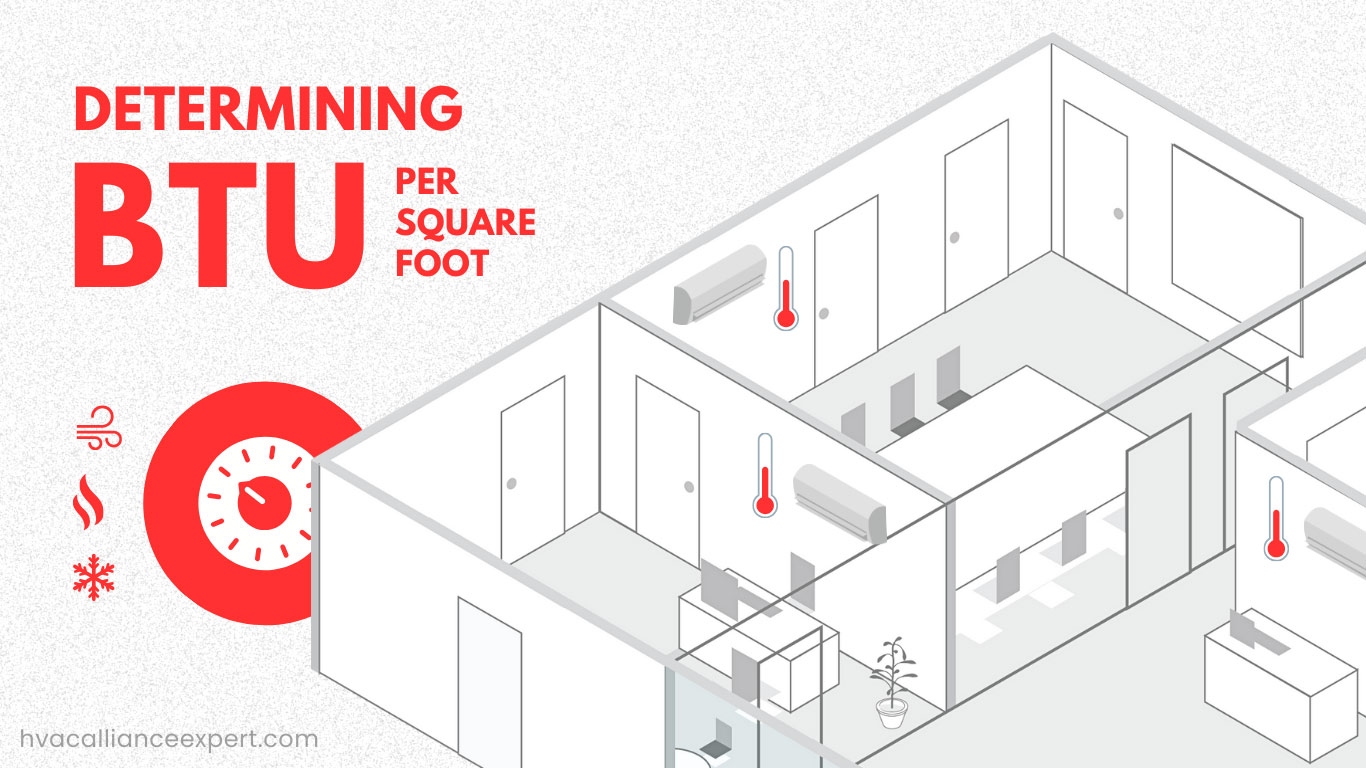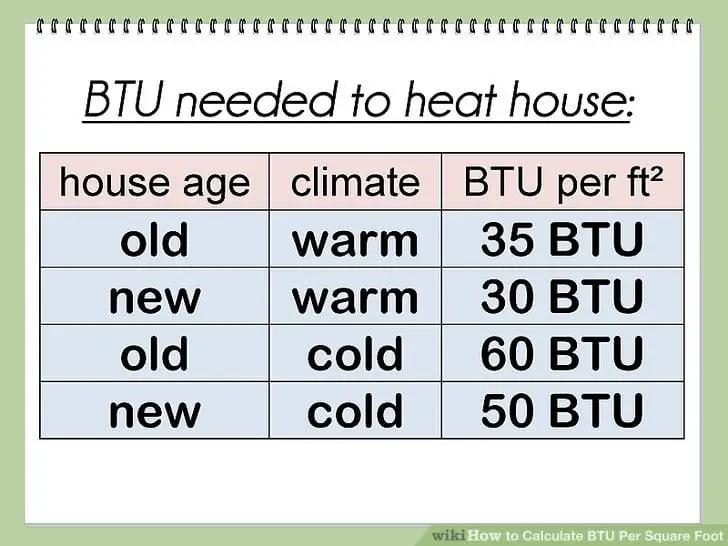How Many Square Feet Does 30000 Btu Heat

Determining the appropriate heating or cooling capacity for a space is crucial for comfort, efficiency, and cost-effectiveness. One common question homeowners, HVAC technicians, and facility managers encounter is: “How many square feet does 30000 BTU heat or cool?” While there isn’t a one-size-fits-all answer, understanding the factors that influence this calculation is key to making informed decisions about HVAC systems.
Understanding BTU and Its Significance
BTU (British Thermal Unit) is the standard unit of measurement for heat. Specifically, one BTU is the amount of energy required to raise the temperature of one pound of water by one degree Fahrenheit. In HVAC terms, BTU ratings indicate the heating or cooling power of a unit. A higher BTU rating signifies a greater capacity to heat or cool a larger area. Therefore, a 30000 BTU unit can theoretically handle a larger space than, say, an 18000 BTU unit.
For example, a 30000 BTU furnace generates 30000 BTUs of heat per hour. A 30000 BTU air conditioner removes 30000 BTUs of heat per hour from a space.
The Rule of Thumb: BTU per Square Foot
A common guideline used in the HVAC industry is to allocate approximately 20 BTU per square foot for heating and cooling. Using this as a starting point, a 30000 BTU unit would theoretically be suitable for a space of:
30000 BTU / 20 BTU per square foot = 1500 square feet
However, this is a very simplified estimation. The 20 BTU per square foot rule is a good starting point, but shouldn't be the only factor you consider.
Factors Influencing BTU Requirements
Several factors can significantly impact the actual BTU requirement for a space. Relying solely on the square footage can lead to undersized or oversized systems, resulting in discomfort, energy waste, and premature equipment failure. Here are the key variables to consider:
Climate Zone
The geographic location and its associated climate are major determinants of heating and cooling needs. Homes in colder climates require more heating BTUs than those in milder regions. Conversely, hotter climates demand a higher cooling capacity. For instance, a 30000 BTU unit might adequately heat a 1500 sq ft space in a moderate climate, but it might be insufficient for the same space in a region with harsh winters.
Insulation Levels
Adequate insulation is critical for minimizing heat loss in winter and heat gain in summer. Well-insulated walls, ceilings, and floors reduce the BTU requirement. Homes with poor insulation will need a higher BTU output to compensate for the energy lost through the building envelope. Upgrading insulation is often a worthwhile investment that can lead to lower heating and cooling costs over the lifespan of the system. Think about insulating your attic and crawl spaces to retain heat or keep heat out.
Window Efficiency
Windows are a significant source of heat transfer. Single-pane windows offer little insulation, allowing substantial heat loss or gain. Energy-efficient windows, such as double-pane or triple-pane windows with low-E coatings, significantly reduce heat transfer, thereby lowering the BTU requirement. The direction your windows face also impacts the amount of heat that is transferred.
Ceiling Height
The rule of thumb of 20 BTU per square foot assumes a standard ceiling height of 8 feet. If your ceilings are higher than 8 feet, the volume of air that needs to be heated or cooled increases, necessitating a higher BTU output. For example, a room with 10-foot ceilings will require more heating or cooling power than a room with 8-foot ceilings, even if the square footage is the same.
Number of Occupants
The number of people regularly occupying a space affects the cooling load. Each person generates heat, which needs to be accounted for in the BTU calculation. A home occupied by a large family will typically require more cooling power than a home occupied by a single person.
Sun Exposure
The amount of direct sunlight a building receives can significantly impact the cooling load. Buildings with south-facing windows experience greater solar heat gain, especially during the summer months. This increased heat load necessitates a higher cooling capacity. Using blinds and curtains can help mitigate this issue.
Air Leakage
Air leaks around windows, doors, and other openings can lead to significant energy loss. Sealing these leaks can improve energy efficiency and reduce the BTU requirement. Consider air sealing around windows and doors to retain more heat and save energy.
Ductwork Efficiency
The efficiency of the ductwork is critical to effectively delivering heated or cooled air throughout the building. Leaky or poorly insulated ducts can result in significant energy loss, forcing the HVAC system to work harder to maintain the desired temperature. Regularly inspect your duct work and make any necessary repairs.
Calculating BTU Needs More Accurately
While the 20 BTU per square foot rule provides a rough estimate, a more accurate calculation requires a Manual J load calculation. This comprehensive assessment considers all the factors mentioned above, including climate, insulation, window efficiency, ceiling height, occupancy, sun exposure, and air leakage.
Manual J calculations are typically performed by HVAC professionals using specialized software. The output of a Manual J calculation provides a precise BTU requirement for both heating and cooling, ensuring that the selected HVAC system is properly sized for the specific building.
Oversized vs. Undersized Systems
It's crucial to avoid both oversized and undersized HVAC systems. An undersized system will struggle to maintain the desired temperature, leading to discomfort and increased energy consumption. An oversized system, on the other hand, can cycle on and off frequently, resulting in uneven temperatures, higher humidity levels (in cooling mode), and reduced equipment lifespan. Oversized systems also cost more upfront and can lead to higher energy bills due to inefficient operation. Systems that cycle frequently will also require more maintenance.
Cost, Efficiency, and Lifespan Considerations
When selecting an HVAC system, it's essential to consider not only the BTU rating but also the cost, efficiency, and lifespan of the equipment.
- Cost: Initial purchase price, installation costs, and operating costs (energy bills and maintenance) should all be factored into the decision-making process.
- Efficiency: Look for systems with high efficiency ratings, such as SEER (Seasonal Energy Efficiency Ratio) for air conditioners and AFUE (Annual Fuel Utilization Efficiency) for furnaces. Higher efficiency ratings translate to lower energy bills.
- Lifespan: The average lifespan of an HVAC system is 15-20 years. Proper maintenance can extend the lifespan of the equipment and prevent costly repairs.
Examples and Applications
Let’s look at some real-world examples:
- Example 1: A well-insulated 1200 sq ft home in a moderate climate might only need a 24000 BTU unit (1200 sq ft x 20 BTU/sq ft) for adequate heating and cooling.
- Example 2: A poorly insulated 1500 sq ft home in a cold climate with high ceilings might require a 36000 BTU unit or even larger, especially if the Manual J calculation suggests a higher BTU requirement.
- Example 3: A facility manager overseeing a 2000 sq ft office space with multiple occupants and significant sun exposure might need a 40000 BTU cooling unit to maintain a comfortable temperature.
Conclusion
While the general rule of thumb suggests that a 30000 BTU unit can heat or cool approximately 1500 square feet, numerous factors influence the actual BTU requirement. Climate, insulation, window efficiency, ceiling height, occupancy, and sun exposure all play a crucial role in determining the appropriate HVAC system size. For accurate results, a Manual J load calculation performed by a qualified HVAC professional is highly recommended. Remember that selecting the right size HVAC system is crucial to maximizing comfort, energy efficiency, and equipment lifespan. Consider investing in a professional assessment to ensure you make the best decision for your specific needs and circumstances. By understanding the nuances of BTU calculations and considering all relevant factors, homeowners, HVAC technicians, and facility managers can make informed decisions about heating and cooling solutions.










